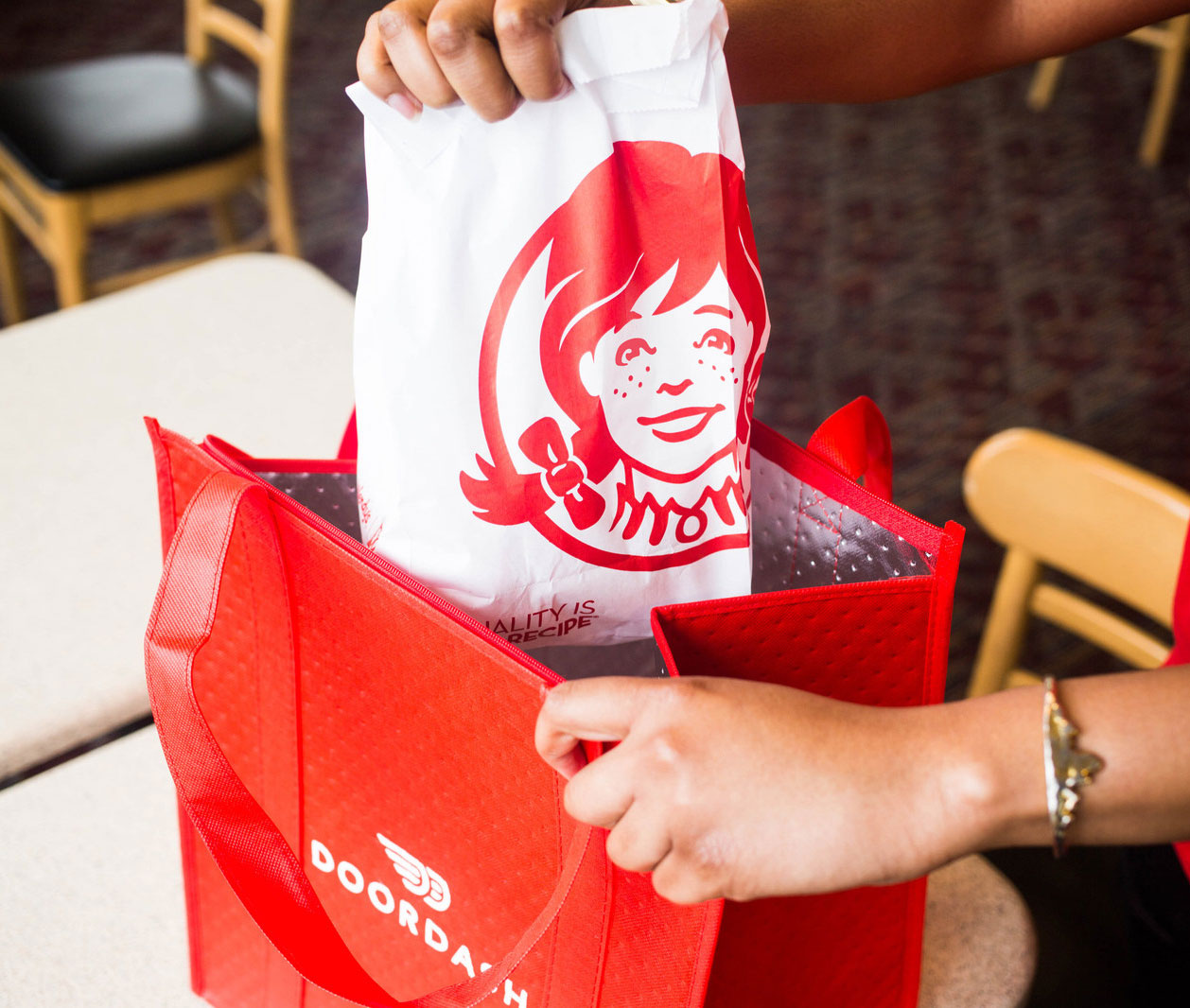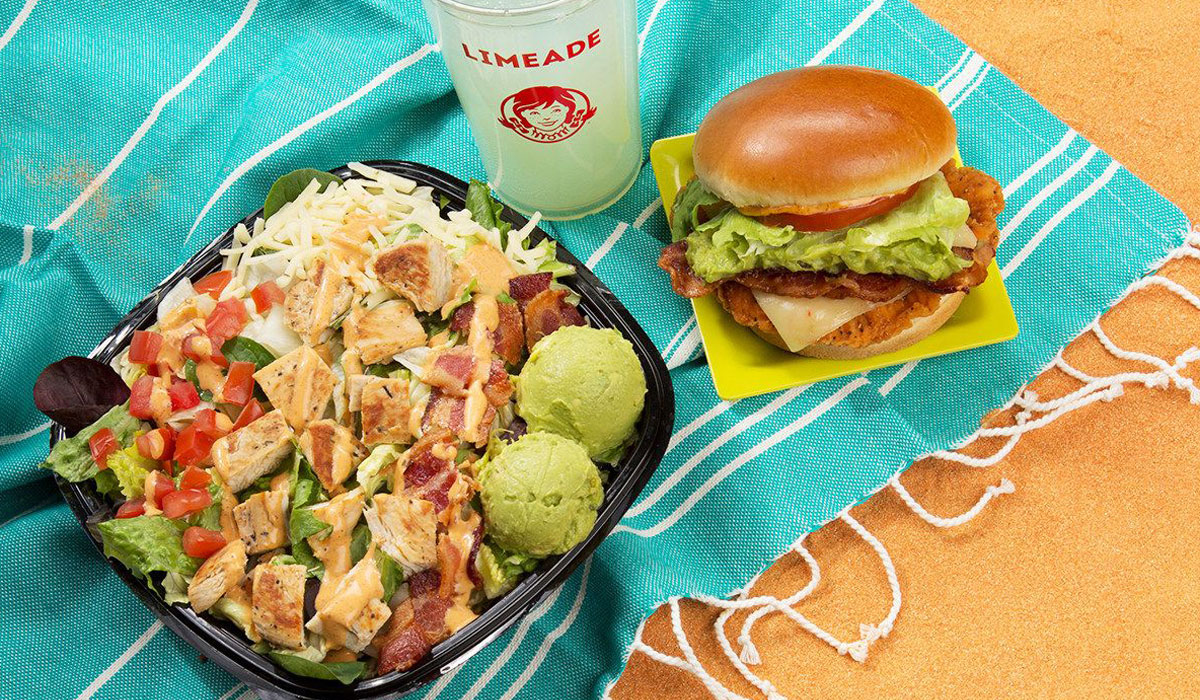As Wendy’s chief executive Todd Penegor often touts, quick service, with more than 80 percent of all restaurant visits, remains the place to be. But where is today’s consumer going? To a one-to-one relationship anchored in consumer-facing digital initiatives, he said during a February 21 conference call. And on that note, Wendy’s has ground to make up. In 2019, the burger chain plans to invest an incremental $25 million “to build a stronger foundation across our digital platforms,” Penegor said. While Wendy’s hasn’t previously skirted the channel by any means, this fresh plan signals a heightened sense of urgency for the brand.
The $25 million itself will be divided into two parts: a $15 million investment in consulting company Accenture, and $10 million on digital scanning equipment that will improve throughput and unlock consumer insights and digital initiatives Wendy’s can leverage moving forward.
Penegor said Wendy’s would “stand up our digital experience organization” in 2019, led by chief digital officer Laura Titas, former managing director at Accenture Interactive, who joined Wendy’s senior leadership in November. The Accenture deal ties together Wendy’s digital and marketing efforts with a consumer-driven point of view, Penegor said.
There are several ways Wendy’s plans to ramp up digital in 2019. But before diving in, here’s how the company performed in fiscal 2018’s final quarter. The chain reported North American same-store sales gains of 0.2 percent. For the full year, comps lifted 0.9 percent, which marked Wendy’s eighth straight year of same-restaurant sales growth. Last quarter, a 0.2 percent comps decline snapped a 22-quarter streak of positive gains.
Wendy’s opened a net of 32 North America restaurants and five international units in Q4. For 2018, it opened a net of 48 North America restaurants and 29 international.
Operating profit dipped 21 percent to $45.8 million as the company noted a 7.5 percent increase in cost of sales. Wendy’s revenue climbed 3.6 percent to $397.8 million.

Leaning on digital
Wendy’s decision to turn up the digital dial doesn’t mean it’s been idle lately. Among recent key initiatives: mobile ordering, mobile offers to gain app users, and the continued rollout of nationwide delivery via DoorDash. Mobile ordering is expected to reach the entire U.S. system by the end of 2019, Penegor said.
He also admitted that awareness, across all digitals activations, remains the biggest roadblock. Leaping that will come down to sheer scale—something Wendy’s plans to address this year. The addition of systemwide mobile ordering will also allow the chain to “begin to build a one-to-one relationship with our customers, which is the ultimate goal,” Penegor said.
Delivery expansion outpaced expectations in 2018 and has grown to 60 percent coverage in North America. Penegor said Wendy’s expects to hit 80 percent by year’s end. And, again, success will depend on pushing the message out. In this battle, Penegor didn’t tap a competitor in the burger or quick-service field as Wendy’s biggest market-share threat. Rather it’s “food at home and providing more access and more reach to our brand,” he said.
“Complementing our restaurants with delivery is a good proposition,” Penegor added.
Delivery has been a guarded rollout to date for Wendy’s. Check sizes are reporting one-and-half to two times higher than in-store orders—in line with peer results. However, Wendy’s model with DoorDash is one that passes on all costs to the chain. Service fees and delivery fees are taken on by customers, not Wendy’s, which makes watching guest satisfaction a critical task, CFO Gunther Plosch said. “Especially the value perception to make sure that we actually have that right in the minds of the visitors,” he said. Plosch added that customer satisfaction and value perception on delivered orders are favorable so far.
There’s also the question about how delivery fits into some of Wendy’s other consumer-facing initiatives. Notably, speed of service. The topic came up often during Wednesday’s call, especially where it concerns the drive thru. Wendy’s clocked an average of 226.07 seconds in this year’s QSR Drive-Thru Study, good for fourth overall and a significant slowdown from last year’s 185.05 seconds. It was 169.11 the year before that, which ranked first among quick-serve competitors. More on this shortly.
Penegor was asked how DoorDash drivers going through the drive thru might affect speed, and if Wendy’s would consider testing delivery-dedicated windows
“Who is actually stealing a little bit of that share? Well you’re seeing it in the Mexican concepts and you’re seeing in the big chicken player, and those are opportunities to make sure that we understand why they’re stealing some of the share and we’ll make sure that our calendar and our service experience really complements that we can continue to bring those customers back over into our brand.” — Todd Penegor, Wendy’s CEO.
“Clearly there’s always opportunities to get better and really figure out how we get that dasher through the restaurant a little more often,” Penegor said, admitting there’s “pockets of restaurants” where delivery could have sagged times. “But in general, no, it’s spread out and [didn’t have] a meaningful impact. But we’ll continue to look at how do we partner with DoorDash, how do we make sure that we make it easier for the dasher to get orders into our system to ultimately get them through our lines faster and ultimately get food to the consumer faster and that’s what the ultimate goal is.”
Returning to the drive thru and overall speed of service issue, Penegor said there’s opportunity in simplification for Wendy’s. It has training programs in place “as we speak” around how to position and support restaurants for better throughput, “not only with the general managers, but with our multi-unit operators,” Penegor said. “We’re making sure that we’ve got tools out into the restaurants that that are all updated to make sure we’re tracking timing and measurement to really create a focus on that.”
“When you think about our busiest day parts at lunch, we all see it,” Penegor added later. “If you got to a restaurant with a long line, you’re going to pass that long line and head somewhere else. So our opportunity is how do we make sure that those lines move fast. How did those lines move consistent day in and day out, so we can earn the trust of that consumer who wants to come back and really drive a little more frequency to our restaurants.”
On another digital push, Plosch said kiosks are rolling out slower than originally planned, yet remain an important part of Wendy’s plans. They’re currently in 60 percent of company restaurants and return slightly higher check sizes. Revenue growth, as well as throughput enhancements in busy dayparts and the chance to take labor out are proving the business model, he said.
“We’re leading the system to really prove the benefits and a lot of it comes down to labor positioning,” Penegor added. “How do we educate the consumer? And it may not be right for all trade areas and that’s part of the learning that we have but we do feel it’s a compliment to the whole digital strategy.”
Additionally, Wendy’s digital strategy includes an ongoing app acquisition initiative. Wendy’s is pulsing mobile offers to get consumers into the system as it looks to build out monthly active users. Then it can bring mobile ordering into the fold and create a seamless digital architecture that inspires repeat orders, Penegor said.
“At the end of the day what we really want to do is create a better connection to our consumer and gather the data and have a one-to-one connection with everything that we’re doing,” he said. “… I really think this is an investment in the future. We’re playing a long game to really show accelerated growth and we need to be out in front of it.”

One more visit, one more dollar
Last quarter, Wendy’s addressed menu concerns that were driving positive comps but failing to create sales and profitability figures it hoped for. The culprit: lower mix benefit. Essentially, the company’s high-low offerings are resonating when it comes to traffic in the burger segment, where Wendy’s has gained or held share for 13 consecutive quarters. But the current opportunity lies in trading guests up and adjusting its calendar to “create not only one more visit, but one more dollar as we bring customers into our restaurants,” Penegor said. Traffic for the year was flat overall.
Wendy’s experienced some pressure on dollar traffic share in Q4 within the burger category. You can see the issue adjusting the chain’s menu promotions. For example, Penegor said, Wendy’s moved into trading guests up from its famed 4 for $4 deal into the $5 Giant Junior Bacon Cheeseburger at the beginning of the year. And now it’s looking to push consumers further into premium with the recently launched “Made to Crave” line, which hit stores in early February. The addition of the S’Awesome Bacon Cheeseburger, Peppercorn Mushroom Melt, and Barbecue Cheeseburger represent the biggest change to Wendy’s premium menu in more than decade.
This “one more visit, one more dollar approach,” will be the focal point of Wendy’s menu strategy in 2019.
The 4 for $4 deal is still playing a key role and driving business, though, Penegor said. The goal is simply trading orders up to the $5 price point whenever possible. Another visit. Another dollar. The $5 Giant JBC hit twice in 2018 and Penegor said Wendy’s wants both of those in its portfolio. It’s part of a laddered menu price approach that goes along with Wendy’s barbell architecture—a lineup that gives value seekers and premium customers alike options. All of this is becoming crucial as other quick-serve segments push burger brands on all levels, value included.
“Who is actually stealing a little bit of that share? Well you’re seeing it in the Mexican concepts and you’re seeing in the big chicken player, and those are opportunities to make sure that we understand why they’re stealing some of the share and we’ll make sure that our calendar and our service experience really complements that we can continue to bring those customers back over into our brand,” Penegor said.
Wendy’s Bacon Maple Chicken Sandwich is another example, and it performed in line with the company’s expectations last year, Penegor said.
“What do we need to do to really bring folks to life with one more visit, smart dealing, and innovations that really protect and increase our traffic share growth but also make sure that we are driving that one more dollar around premium core in our innovation messaging,” Penegor said. “It is that balance [we strive for] and continue to evolve and get smarter with where the consumer and the competitive landscape is.”









